In mid to late summer, I usually see a common problem with tomatoes: once-perfect fruits on the vine suddenly splitting or cracking.
While you can usually still eat the damaged tomatoes (especially if you pick them soon after they split), it’s a frustrating problem to have because it’s caused by rapid changes in moisture levels, which are often out of your control.
The damaged skin is a physiological condition that can usually be blamed on rain. After a dry summer, a sudden downpour allows the plant to take up way more water than usual. As a tomato takes up water, the fruit expands faster than its skin can stretch, causing the skin to split. What you get are growth cracks or “bursting” of the fruit.
(This same problem also affects carrots, which crack in a similar way.)
But it’s not always rain that causes this—in hot weather, you might find yourself watering more often or more heavily as well, leading the fruits to swell and split.
The damage may appear as radial cracks (which extend from the stem down the sides of the fruit) or concentric cracks (which show up as a circular pattern at the top of the tomato, ringing the stem end). If fruits are left on the vine, rot may set in at the cracks or the cracks may heal over with brown “scar” tissue.
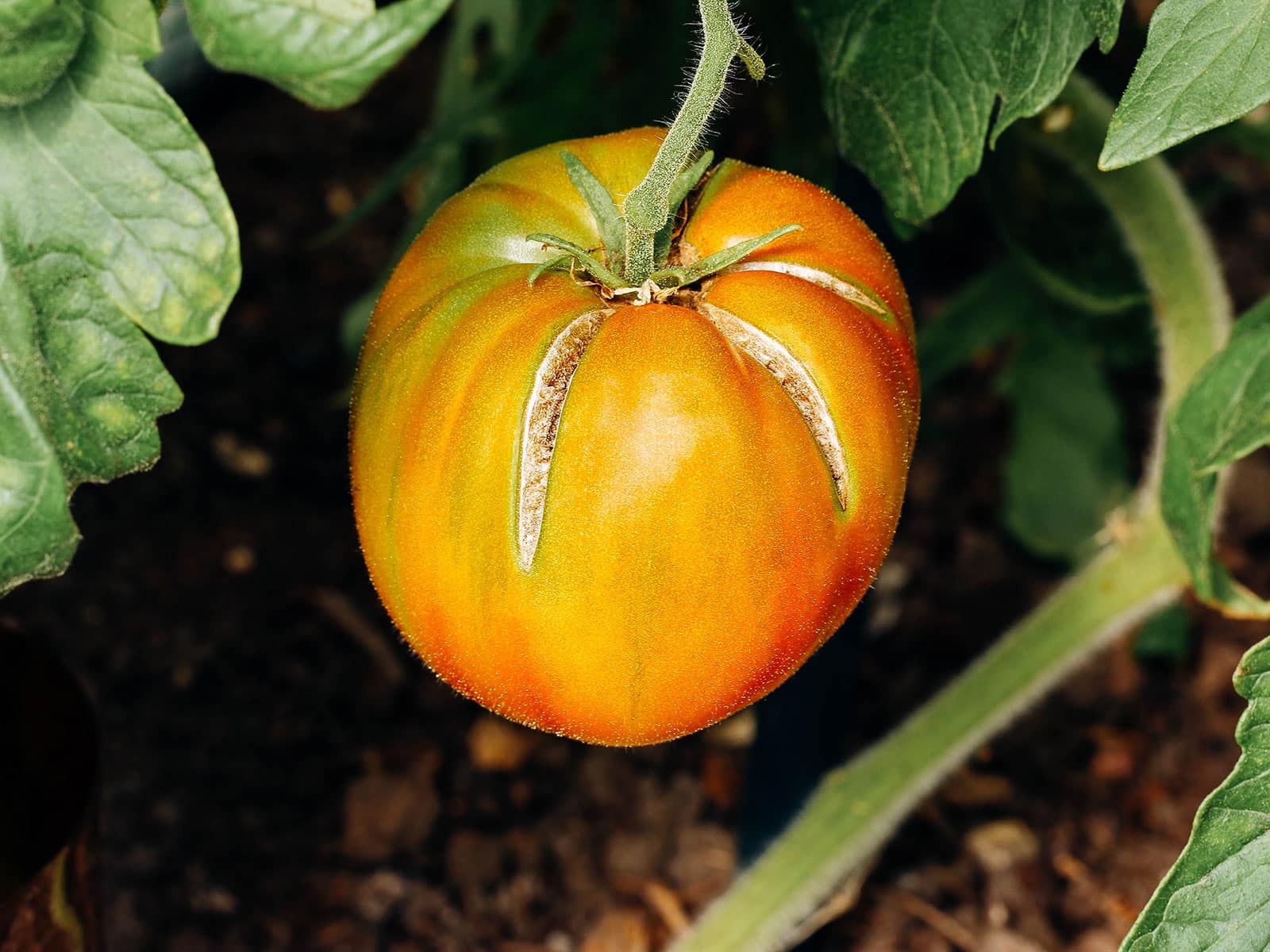
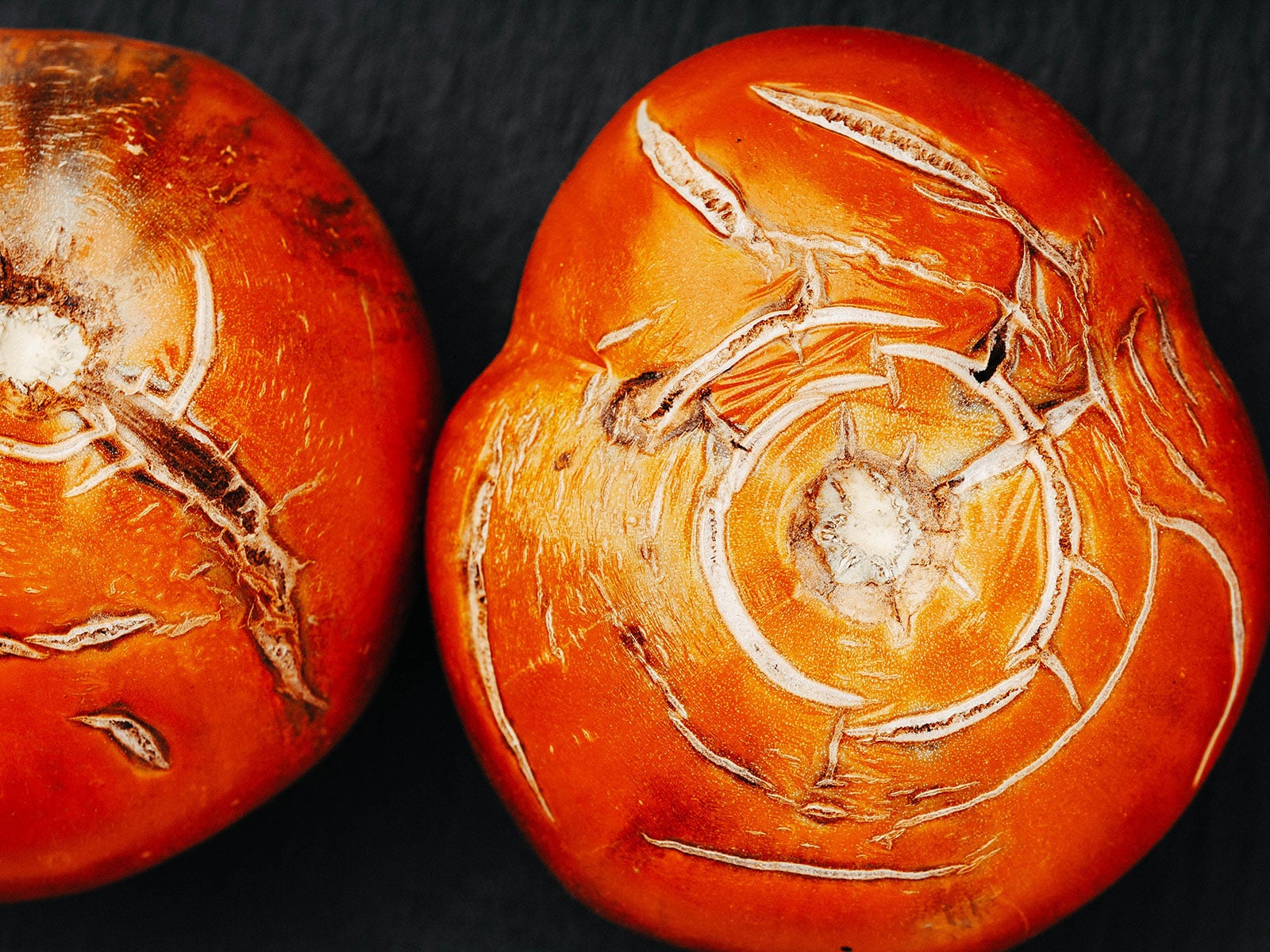
The good news is, there is a way to keep your tomatoes from splitting as often—or altogether.
First, make sure your garden beds are nicely mulched to help retain moisture. Water your plants deeply (but less frequently) to train the roots to reach down in the soil for moisture; this will help the plants survive heat waves (and free you from needing to water so much).
Second, if you go outside and harvest your almost-ripe tomatoes before any forecasted rain, you can save them! As I wrote about previously, tomatoes can be ripened indoors with no difference in flavor or texture.
The notion that a vine-ripened tomato is superior in taste is actually a myth—and likely brought on by our own psychological biases. The best time to pick a tomato, if you want to ensure quality fruit, is right when the skin starts to “blush” (show some color). At that point, you can bring it inside to finish ripening on your counter (and you’ll have beat all the birds and squirrels that want to get to it first!).
If, however, you miss the window and a heavy rain comes, be sure to harvest any split or cracked tomatoes immediately and ripen them the same way indoors. The defects might look ugly, but they don’t really alter the flavor and you can simply cut them out and compost those portions.
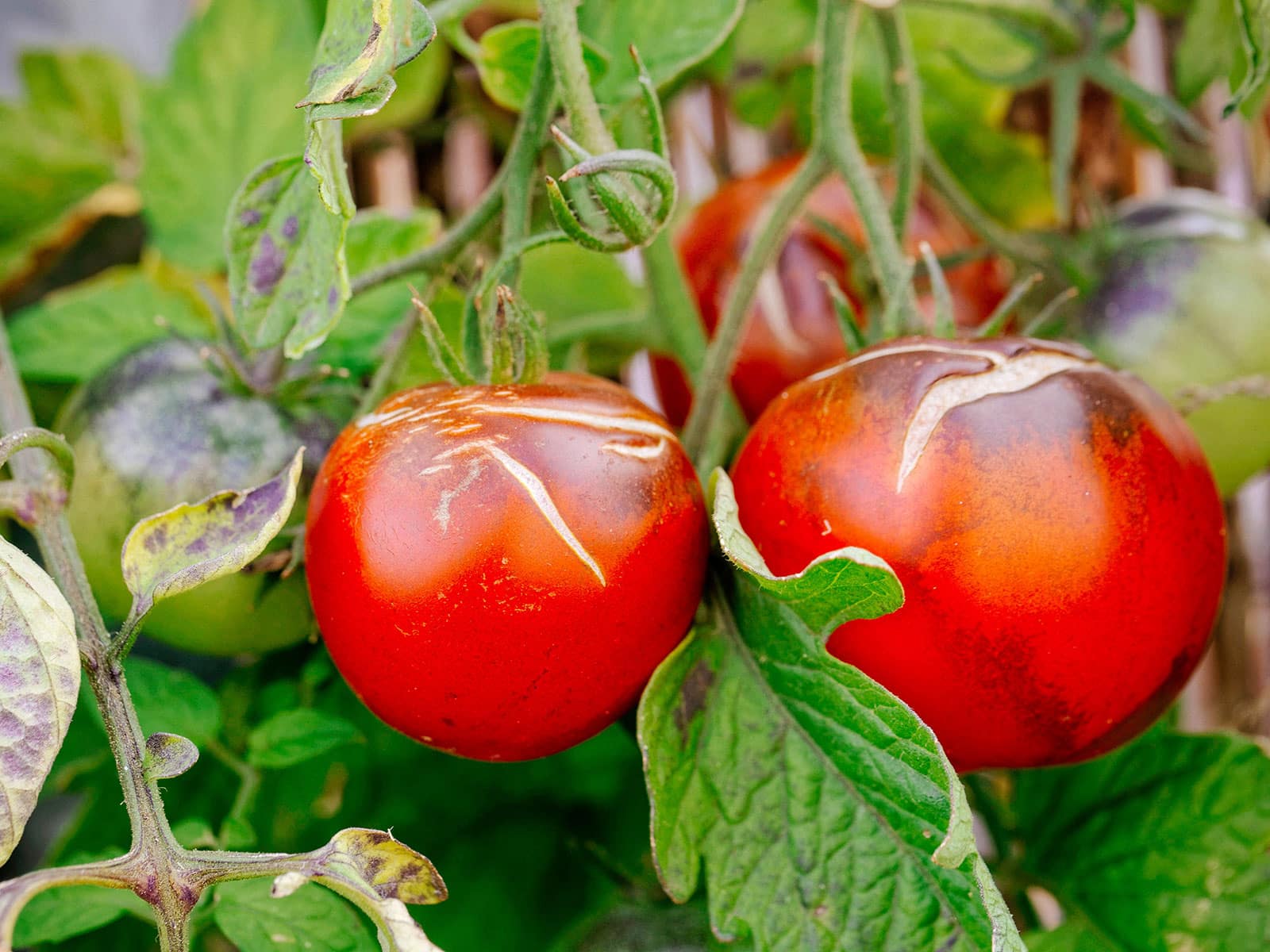
Cracks on tomatoes also look similar to (but aren’t necessarily the same as) another condition called catfacing. You can see what catfacing looks like here and learn how to keep it from happening to your crop.


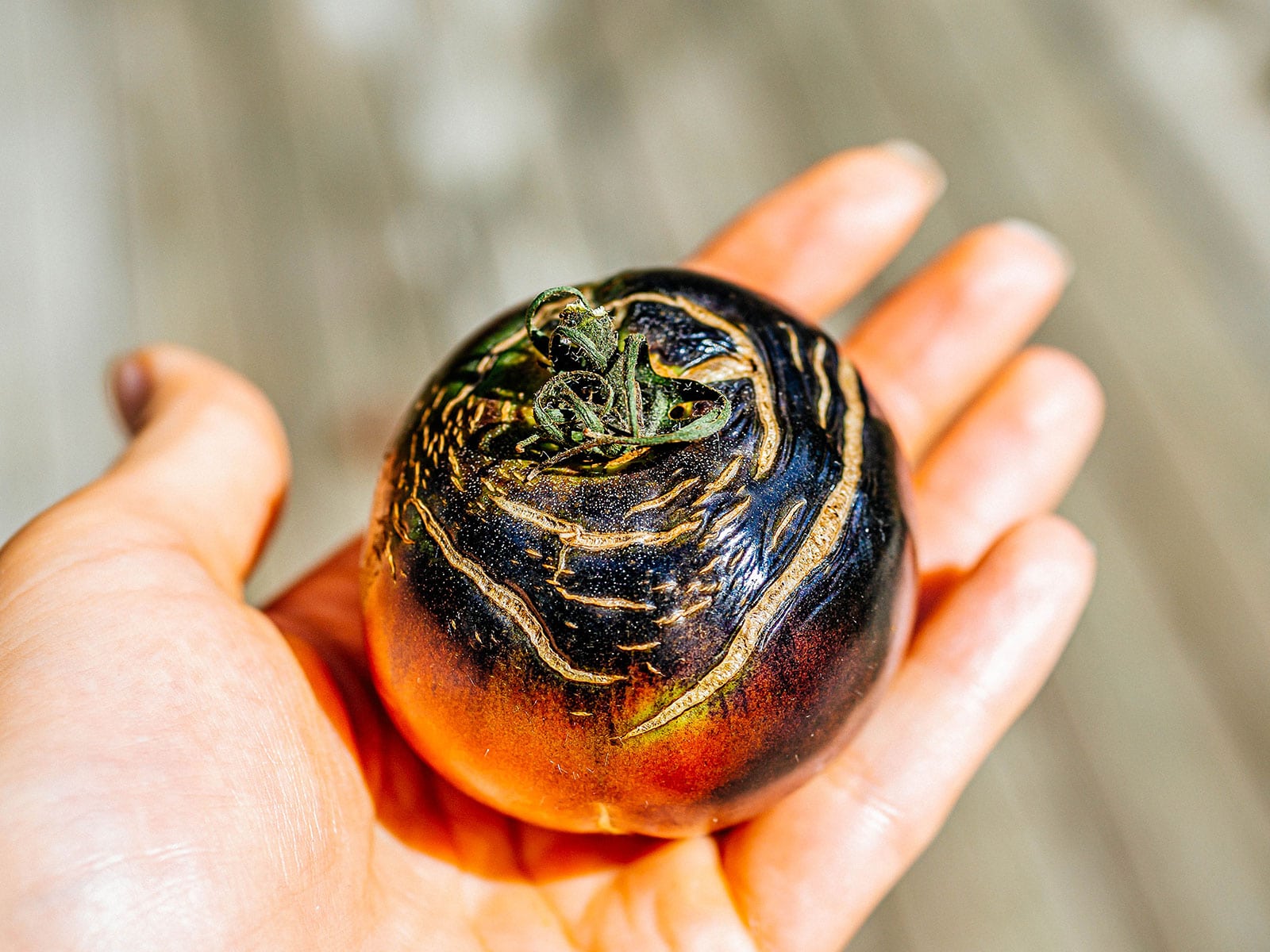
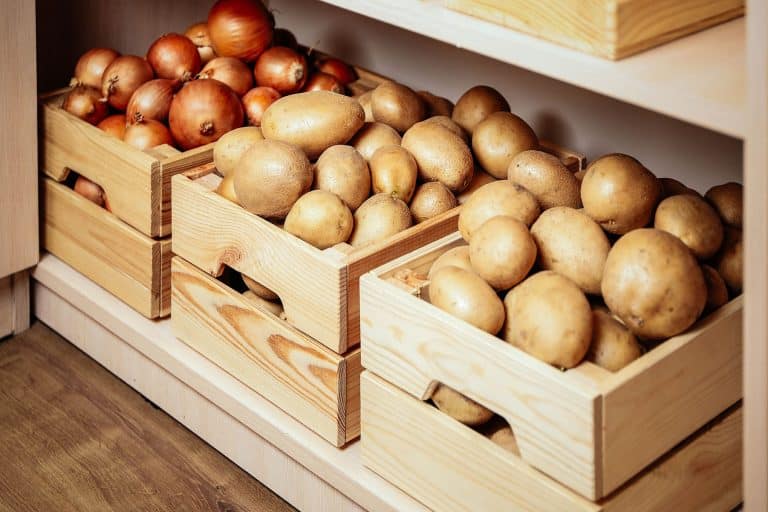

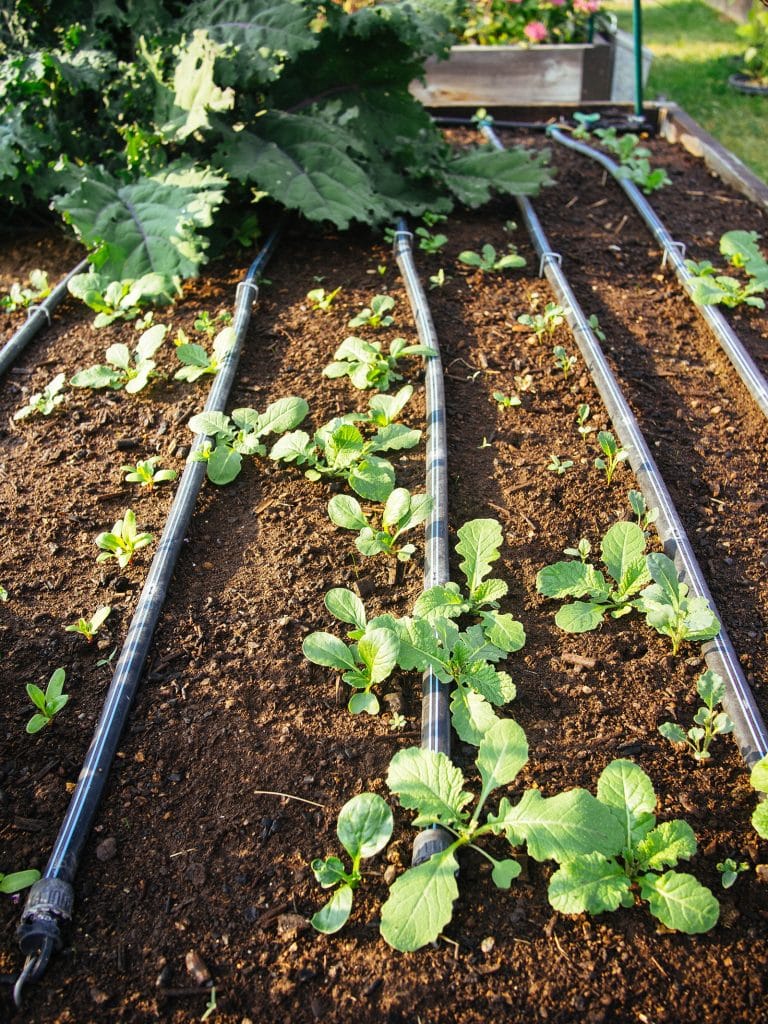



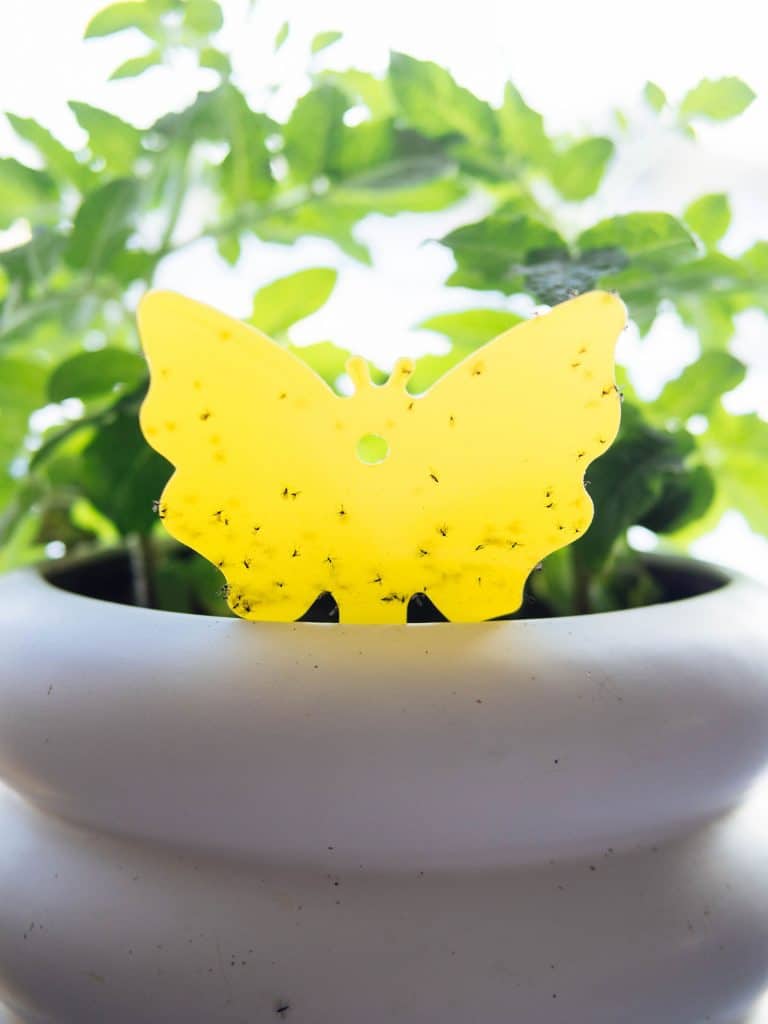
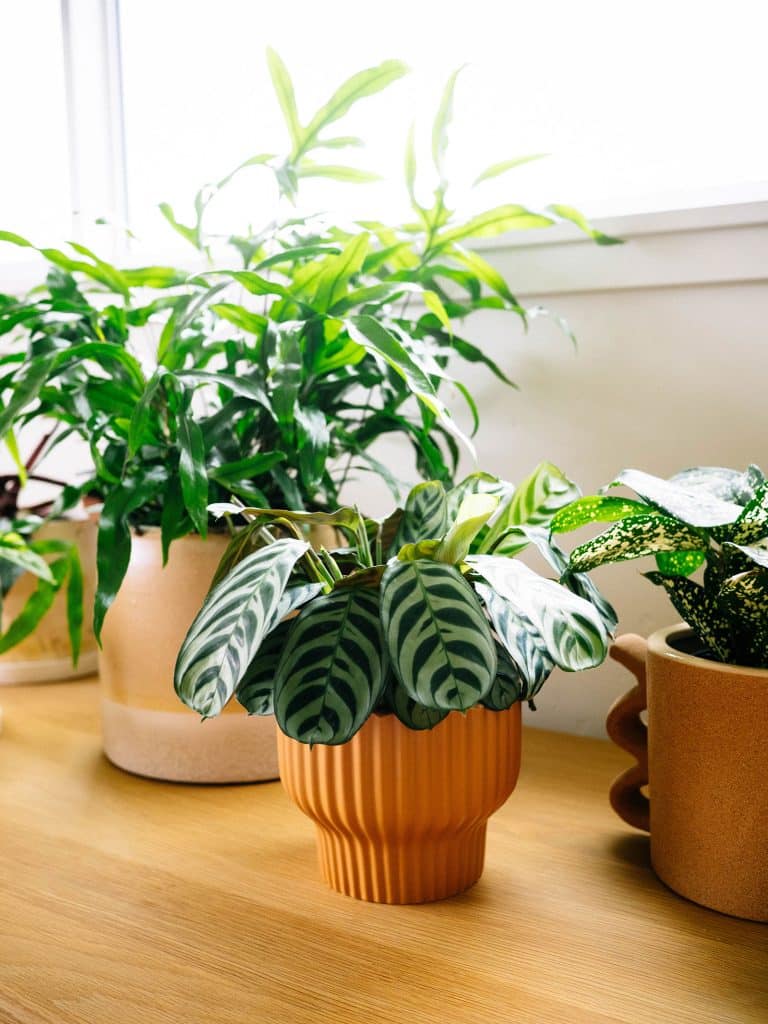
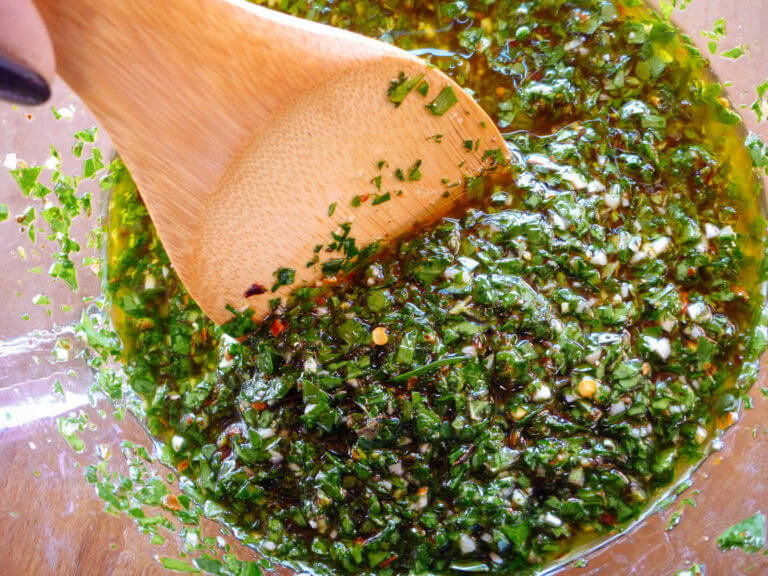
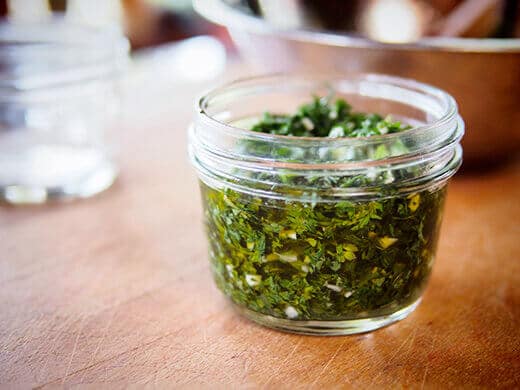
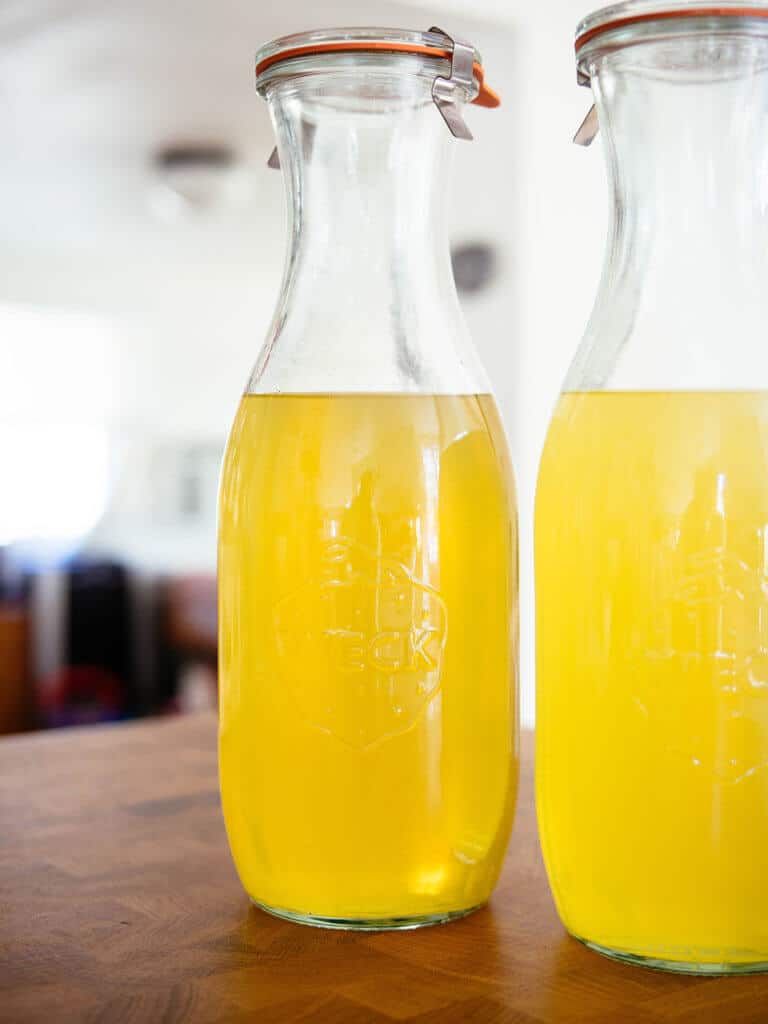
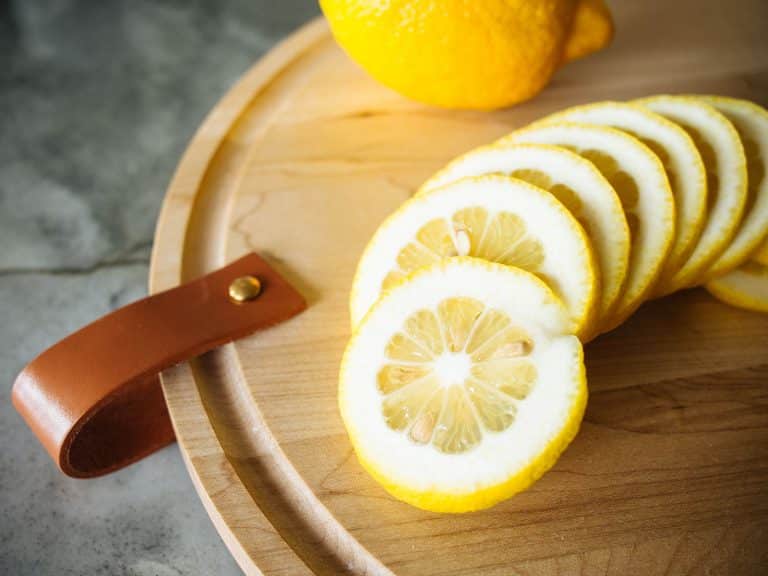

OFF TOPIC: SLUGS. A whle back, Linda wrote a piece about slugs, including coffee grounds in the list of things that do NOT deter them. This is counter to my experience. As a retired science writer, I recognize when a person has intensive knowledge on a subject. Linda’s knowledge of gardening topics is particularly impressive, so I did not reply right a way but decided to think a while about what the distinction might betwee Linda’s expertise and my experience.
1) Experts reported several decades ago that caffeine is a potentially fatal toxin for slugs (mollusks in general?).
2) A substance is a toxin at a certain ‘dose.’
3) Generally toxicity is measured as LD50 (a lethal dose for 50% do the target species.)
We have used coffee grounds as an organic (the scientific meaning) fertilizer and soil conditioner for years. Over about 75 years, I’ve developed a database NPK analyses of several hundred organic and natural soil fertility inputs. The reported NPK analyses for coffee grounds runs a follows: N 1.99 to 2.01 / P .03 to .36 (!). / K .28 (only analysis). The one report I’ve seen for coffee grounds pH is a very surprising 6.9! — Rodale. (Coffee grounds are likely to also have a useful assortment of minor and trace elements, depending on the coffee was grown and probably the brewing method. It is excellent as a mulch and soil conditioner.)
The amount of caffeine in grounds likely depends on the original beans (species, variety, growing conditions), processing (decaf), & brewing method. Because brewing coffee is successful at delivering a caffeine dose (except for decaf) to thouse of us who imbibe, likely much of the caffeine is extracted. But it is also likely to be some residue in the grounds.
OK. Here is are the one time I successfully excluded slugs from a planting including coffee grounds in the strategy: My wife Cynthia was able to score a large bag of coffee grounds including the used filters. I was transplanting fall broccoli in a bed where I had battled slugs all summer with vary questionable success. I separated the filters from the grounds and laid them down around FRESHLY transplanted ‘Umpqua’ broccoli plants that were already 6-8″ high. I figured that the filters would mean that the slugs could not emerge from near the broccoli. They had to travel across several inches of grounds to get to the plants. That involved extended contact with the grounds instead of immediate access to the plant. While there may not be enough caffiene in the grounds to stop slugs that emerge and immediately ‘climb’ their food plant quickly (for a slug), crossing coffee grounds might to get to the plant cause some discomfort).
The other factor may be that the slugs did not know a choice food was there because I mulched the plants immediately after transplanting. Now you may doubt that slugs have the mental capacity to remember a food source, they have actually more than enough capacity for that. (One-cell animals–no nerves to facilitate our kind of memory–have been shown to ‘remember’ the location of a food source in scientific experiments. Compared to a one-cell animal, a slug is a genius.)
So my tentative conclusion is that coffee grounds may have enough residual caffeine to discourage a slug to traverse them randomly, if slugs have been feeding on a plant, the discomfort of crossing the grounds to get to it may be an insufficient deterant. And they probably go into the soil near the plant after feeding, so the shortest rout to the plant is straight up.
The best slug control I’ve used involve a trap crop in random places in a permanently mulched garden. The trap crop that I’ve successfully used is chinese cabbage. I had a lot of old seed which I broadcast onto the mulch figuring that the seeds would grow or become a minor fertilizer. They grew profusely and the slugs LOVE them. It turns out that, MOSTLY, slugs congretate on a given plant instead of randomly attacking any nearby plant. So they were quite numerous on specific Chinese cabbages here and there, leaving the other identical plants mostly uneaten. Early in the morning, before slugs go to bed in the soil, I tossed the infested plants to nearby chickens. No chickens? Infested plants could be immersed in soapy water, then composted, slugs and all if chickens, ducks, etc. are unavailable.
BTW experts suggest slug traps be no further from each other that 3 feet, as they are unlikely to ‘smell’ food further from that.
I found that the Chinese cabbage as trap crops all over the place did not seem to affect the more deliberately planted crops. And we had literally bushels of surpluse Chinese cabbage to give away.
Here’s the crazy thing – this year in the Pacific Northwest (Skagit Valley, so milder summers than most areas of Oregon where I’m originally from, no heat waves to freak out about), we’re growing San Marzanos and Black Krim & Cherokee Purple tomatoes in the same raised bed, and it’s been a BANNER year for the San Marzanos (a rarity there’s been zero blossom end rot), but the non-plum BK and CP tomatoes are sparse on the vine and the few that have grown are massively cracked on top. A very weird thing since I don’t dare mess with a good San Marzano crop yet the big ones are rebelling like crazy even though they get the same amount of water…any thoughts? I’ve interspersed these for 20 years so it’s definitely a strange year for tomatoes…
Why do my tomatoes have tough skins?
Thanks
I had end rot and used wood ash to clear it up.